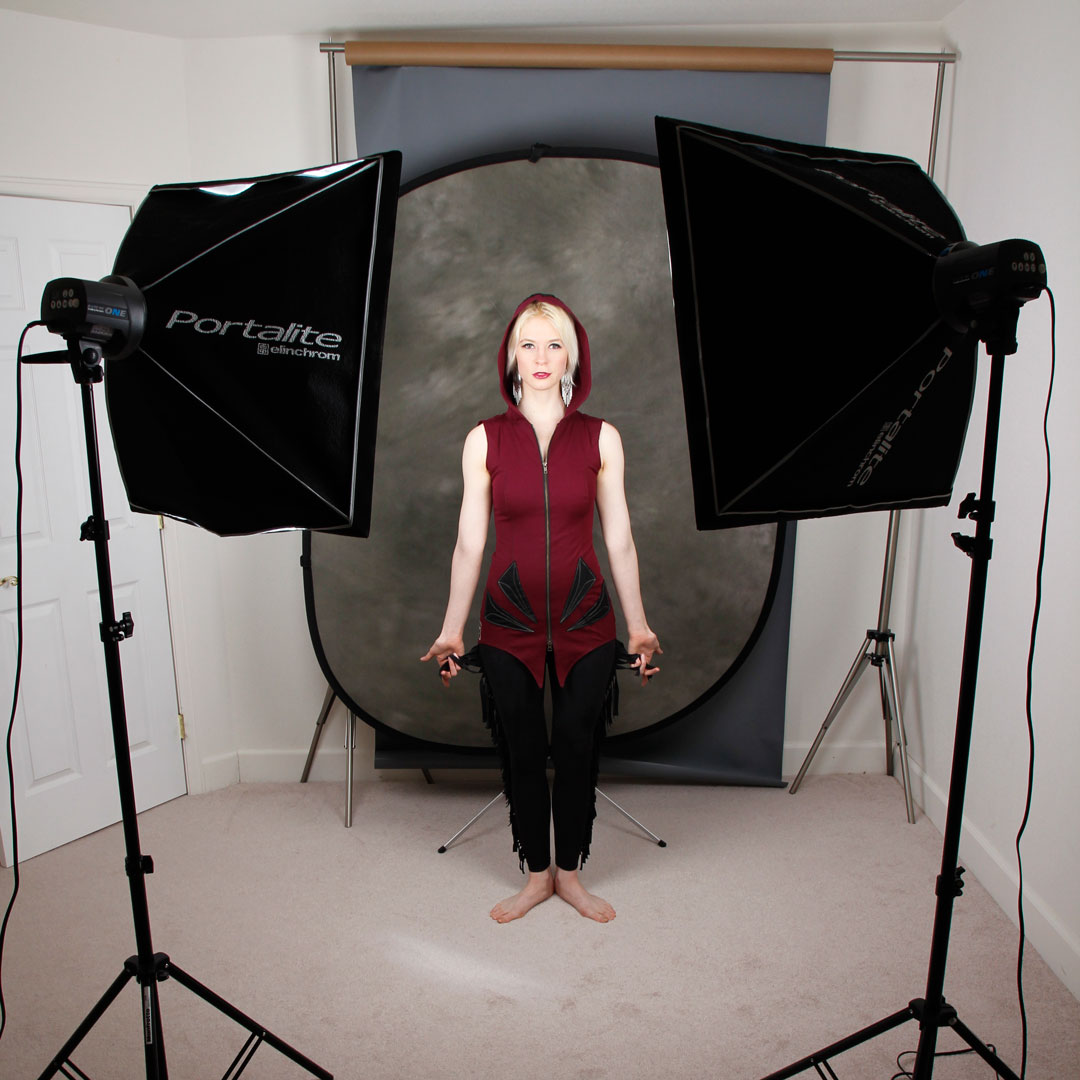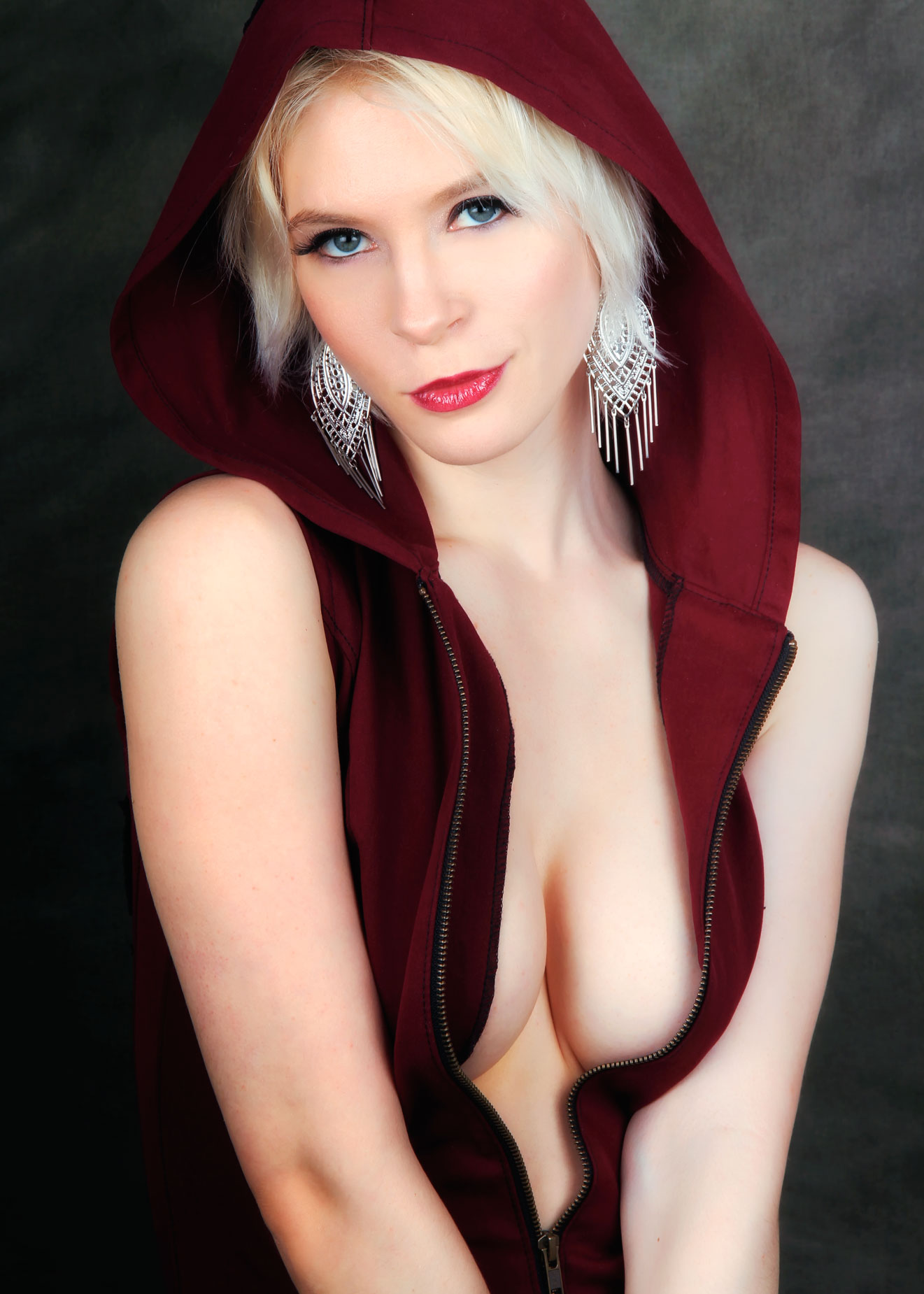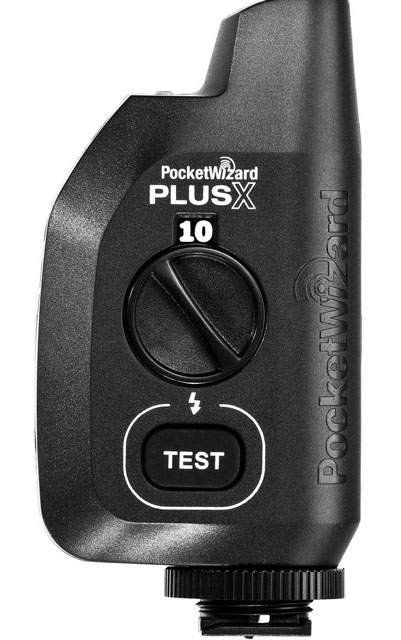Today’s Post by Joe Farace
I advocate glamour. Every day. Every minute.—Dita Von Teese
 A monolight is a self-contained studio flash. Within a single, compact housing, it contains a power source, modeling light, flash tube and controls. A monolight can be powered by AC or DC battery power and like any studio light allows the fitting of light modification devices, such as reflectors, umbrellas or softboxes.
A monolight is a self-contained studio flash. Within a single, compact housing, it contains a power source, modeling light, flash tube and controls. A monolight can be powered by AC or DC battery power and like any studio light allows the fitting of light modification devices, such as reflectors, umbrellas or softboxes.
A monolight’s controls typically let you change the amount of its output from full, half, quarter and sometimes 1/32’nd power, either in stepped increments or as continuously variable output. One of a monolight’s most valuable features includes a modeling light that lets you preview what the flash will look like when falling on the subject and whose intensity can be varied to match the power setting or even off.
Monolights typically include a sync cord for attaching to your camera’s PC (Prontor-Compur) connection which triggers the light when you trip the camera’s shutter. These days, not all DSLRs and mirrorless cameras have a PC connection and you might have to use a hot shoe to PC adapter to connect the sync cord to the main light. Because of the high voltages across the tip of a sync cord, you should avoid using a cheap adapter because it can fry the electronics inside your camera. If you want to eliminate the sync cord entirely, there’s another suggestion below:
 How I Made this Portrait: I photographed the dynamic Pam Simpson in my 11×15-foot home studio. In this setup two Elinchrom D-Lite RX monolights were placed at approximately 45 degrees to one another with a 26-inch square softbox mounted on each one. Output was adjusted with my laptop computer to be at approximately one-quarter power, providing almost instantaneous recycle no matter how fast this subject changed poses. Background was a 60×72-inch Savage Infinity Monsoon, two-sided collapsible backdrop, think cloudy, stormy day, with one side being darker than the other. The camera used was a Canon EOS 60D with EF-S15-85mm f/3.5-5.6 IS USM lens (53mm) with an exposure of 1/125 sec at f/11 and ISO 200.
How I Made this Portrait: I photographed the dynamic Pam Simpson in my 11×15-foot home studio. In this setup two Elinchrom D-Lite RX monolights were placed at approximately 45 degrees to one another with a 26-inch square softbox mounted on each one. Output was adjusted with my laptop computer to be at approximately one-quarter power, providing almost instantaneous recycle no matter how fast this subject changed poses. Background was a 60×72-inch Savage Infinity Monsoon, two-sided collapsible backdrop, think cloudy, stormy day, with one side being darker than the other. The camera used was a Canon EOS 60D with EF-S15-85mm f/3.5-5.6 IS USM lens (53mm) with an exposure of 1/125 sec at f/11 and ISO 200.
 I’m a bit of a klutz when working in the studio and have, more than once, stumbled over a power cord and more times than I can count, over a sync cord. For me, and others like me, a wireless trigger, like the inexpensive ($95) Pocket Wizard PlusX is the best and safest solution for tripping the light fantastic. This unit has a range of (up to) 1600-feet and offers 10 channels that are backward-compatible with all other PocketWizards and PocketWizard-enabled devices. Mary bought me a pair of these devices as a gift and I consider them to be indispensable studio gear.
I’m a bit of a klutz when working in the studio and have, more than once, stumbled over a power cord and more times than I can count, over a sync cord. For me, and others like me, a wireless trigger, like the inexpensive ($95) Pocket Wizard PlusX is the best and safest solution for tripping the light fantastic. This unit has a range of (up to) 1600-feet and offers 10 channels that are backward-compatible with all other PocketWizards and PocketWizard-enabled devices. Mary bought me a pair of these devices as a gift and I consider them to be indispensable studio gear.
 If you enjoyed today’s blog post and would like to buy Joe a cup of Earl Grey tea ($3.50), click here. And if you do, thank you very much.
If you enjoyed today’s blog post and would like to buy Joe a cup of Earl Grey tea ($3.50), click here. And if you do, thank you very much.
You can see more of Ms. Stoneman and many other models in my book Joe Farace’s Glamour Photography. The book is full of tips, tools and techniques for glamour and boudoir photography with new copies available from Amazon selling or $31.94 with used copies starting at the bargain price around nine bucks. Kindle copies are available for $19.99 for those photographers who preferring a digital format.